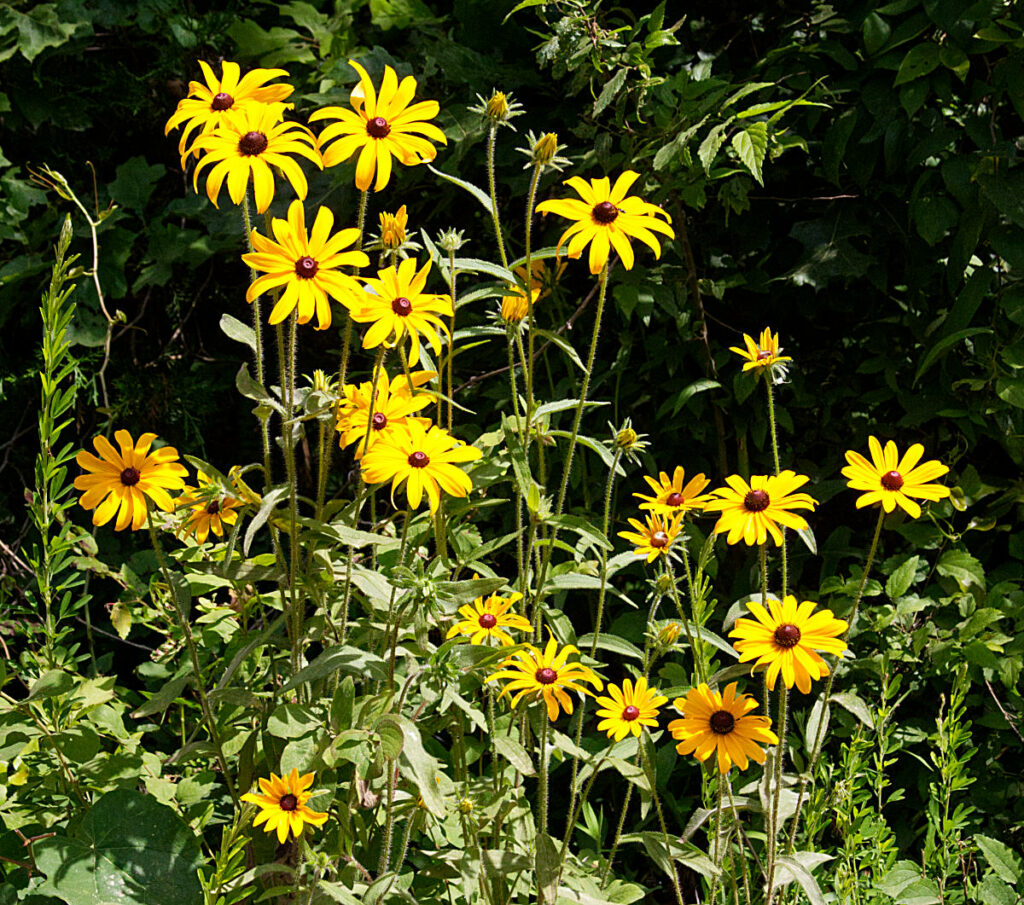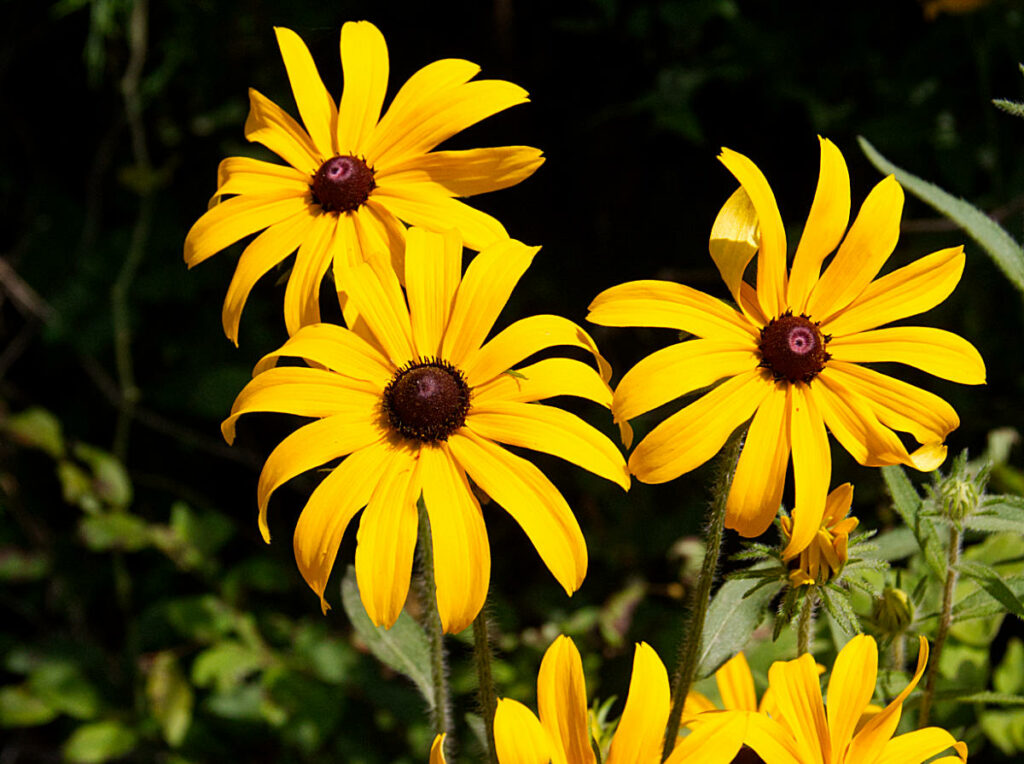
Attention all nature enthusiasts and garden gurus! Have you ever heard of Black-eyed Susan? No, it’s not a cowgirl from the Wild West, it’s a wildflower that is as stunning as it is useful! Black-eyed Susan, also known as Rudbeckia hirta, is a flowering plant that can be found growing in open fields, meadows, and gardens across North America. This sunny yellow flower is not only a feast for the eyes, but it also offers a range of nutritional and medicinal benefits. Keep reading to discover the fascinating uses and properties of Black-eyed Susan, and how you can incorporate it into your own diet and garden.
Description of Black-eyed Susan
Black-eyed Susan, also known as Rudbeckia hirta, belongs to the family Asteraceae, which includes over 23,000 species of plants. As a member of this family, Black-eyed Susan is related to other well-known plants such as sunflowers, daisies, and chamomile.
Black-eyed Susan is an annual or biennial plant that grows up to three feet tall. The stems are hairy and erect, with alternate leaves that are ovate to lanceolate in shape and can reach up to six inches in length. The leaves are also hairy and have toothed edges.
The most recognizable feature of Black-eyed Susan is its bright yellow petals with dark brown centers. These flowers can range in size from two to five inches in diameter and bloom from June to September. Black-eyed Susan also produces small, dry, and light brown seeds that can be used for propagation.
Black-eyed Susan is native to North America and can be found growing in open fields, meadows, and along roadsides from Canada to Mexico. It prefers well-drained soils and full sun exposure. It can tolerate drought conditions.
Black-eyed Susan is a popular garden plant due to its attractive blooms and easy-to-grow nature. It has also become naturalized in many other parts of the world, including Europe, Asia, and Australia.
This flower has been bred for different colors of flowers and seeds are available online. They will flower in the first summer if planted in the spring. They can return the following year from established roots. They also readily self-seed, so if you plant them once in an area they should return each year from the roots and seeds that are spread in the area. They bloom from June through September each year.
Black-eyed Susan is one of many flowers known as coneflowers. The petals spread out from the center of the flower to reveal a chocolate brown colored cone in the center of the flower. The petals of wild black-eyed Susan are usually some shade of yellow. There are a number of colors that have been brought about through selective breeding.
The plants grow 1-3 feet tall with a single flower on the end of a long stem. The leaves grow mostly close to the ground, but there are a few alternating leaves up the stem. The stem and leaves are covered in coarse hair. The flowers are 12-18 inches wide.
Black-eyed Susan begins blooming in June and will continue to bloom through August and into early September. They are hardy flowers that tolerate a wide range of soils, except for soil that stays wet due to poor drainage. They prefer full sun but will grow in partial shade. It is a butterfly attractant so if you are planting a butterfly garden it would be a good idea to include this flower.
The plant is mildly toxic and may cause skin irritation. It may be harmful to dogs, cats, and livestock if eaten. Deer avoid eating them, so if you have a deer problem in your garden, this flower should be one you can plant without worrying about fencing. It can also be toxic to cattle and pigs, so you might want to eradicate it from grazing areas to prevent any problems.

Is Black-eyed Susan Edible?
Although there are some references to this plant being used by Native Americans as an edible plant when young, it is not advised. This is due to the potential for toxicity when consumed. There don’t seem to be any reports of poisoning due to eating this plant. However, this may be because people just don’t eat and instead plant them for the beautiful flowers they produce.
Does Black-eyed Susan Have Medicinal Uses?
As with edible uses, Native Americans used it for some medicinal uses. However, there doesn’t seem to be any evidence or further studies to suggest the plant has any proven medicinal uses.
The black-eyed Susan is a lovely flower whether you see it along a roadside or grow them in a garden. Although Native Americans used them for a few medicinal purposes, they don’t have medicinal or edible qualities. They just brighten up your day!
For many more informational articles on plants and natural living be sure and visit our list of articles.
FAQs:
Q: Do black-eyed Susans come back each year?
A: Yes, black-eyed Susans are perennial plants and will come back each year.
Q: Is black-eyed Susan sun or shade?
A: Black-eyed Susans prefer full sun, although they can tolerate some partial shade.
Q: Do black-eyed Susans spread easily?
A: Yes, black-eyed Susans can spread quickly and aggressively if not managed properly.
Q: Is black-eyed Susan an invasive plant?
A: While black-eyed Susans are not considered invasive, they can spread rapidly and compete with native plants if not managed properly.
Q: Where is it best to plant black-eyed Susans?
A: Black-eyed Susans should be planted in a location that receives full sun and well-draining soil.
Q: What are the benefits of planting black-eyed Susans?
A: Black-eyed Susans are a low-maintenance plant that attracts pollinators such as bees and butterflies. They also provide a pop of color to any garden or landscape.
Q: What animals do black-eyed Susans attract?
A: Black-eyed Susans are a favorite of bees and butterflies and can also attract birds that feed on the seeds.
Q: Should I cut down black-eyed Susans?
A: Deadheading (removing the spent flowers) can help promote additional blooms and prevent the plant from self-seeding. However, cutting down the entire plant is not necessary and can be left up to personal preference.
Q: How fast do black-eyed Susans spread?
A: Black-eyed Susans can spread rapidly and aggressively if not managed properly.